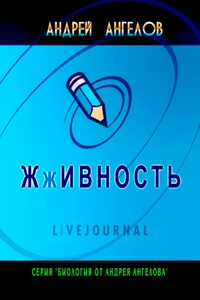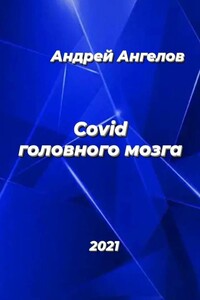Искусство обучать. Как сделать любое обучение нескучным и эффективным - страница 81
3. Berns, Gregory S., Samuel M. Mcclure, and P. Read Montague. 2001. Predictability modulates human brain response to reward. Journal of Neuroscience 21 (April).
4. Cialdini, Robert. 2005. What’s the best secret device for engaging student interest? The answer is in the title. Journal of Social and Clinical Psychology 24 (1): 22–29.
5. Deterding, Sebastian. 2011. A Quick Buck by Copy and Paste, posted by Gamification Research Network. http://gamification-research.org/2011/09/a-quick-buck-by-copy-and-paste.
6. Gailliot, M. T., R. F. Baumeister, C. N. DeWall, J. K. Maner, E. A. Plant, D. M. Tice, L. E. Brewer, and B. J. Schmeichel. 2007. Self-control relies on glucose as a limited energy source: Willpower is more than a metaphor. Journal of Personality and Social Psychology 92: 325–336.
7. Jabr, Ferris. 2010. The Psychology of Competition: Meeting Your Match. Scientific American Mind Nov/Dec: 42–45.
8. Kohn, Alfie. 1993. Punished by Rewards: The Trouble with Gold Stars, Incentive Plans, A’s, Praise, and Other Bribes. Boston: Houghton Mifflin.
9. Loewenstein, G. 1994. The Psychology of Curiosity: A Review and Reinterpretation. Psychological Bulletin 116 (1): 75–98. Found via Stephen Anderson’s excellent article in Johnny Holland.
10. Mason, Charlotte. 1923. Three Instruments of Education, Charlotte Mason’s Original Homeschooling Series 6: 94. Copyrighted 2002–2003 by Ambleside Online.
11. Minnesota Driver’s Manual. http://www.dps.state.mn.us/dvs/DLTraining/DLManual/DLManual.htm.
12. Okita, S. Y., J. Bailenson, and D. L. Schwartz. 2008. Mere Belief of Social Action Improves Complex Learning. Proceedings of the 8th International Conference for the Learning Sciences.
13. Pink, Daniel. 2009. Drive: The Surprising Truth About What Motivates Us. New York: Riverside (Penguin).
14. Schmidt, S.R. 1994. Effects of humor on sentence memory. Journal of Experimental Psychology: Learning, Memory, and Cognition 20: 953–967.
15. Shiv, B. and A. Fedorikhin. 1999. Heart and Mind in Conflict: Interplay of Affect and Cognition in Consumer Decision Making. Journal of Consumer Research 26 (December): 278–282.
16. Thalheimer, W. 2004 (November). Bells, whistles, neon, and purple prose: When interesting words, sounds, and visuals hurt learning and performance – a review of the seductive-augmentation research. http://www.work-learning.com/seductive_ augmentations.htm.
17. Treisman, Philip Uri. 1990. Academic Perestroika: Teaching, Learning, and the Faculty’s Role in Turbulent Times. From an edited transcript of his lecture of the same name, delivered March 8, 1990, at California State University, San Bernardino. http://www2.ed.gov/about/offices/list/ope/fipse/perestroika.html.
18. Vohs, Kathleen D. and R. J. Faber. 2007. Spent Resources: Self-Regulatory Resource Availability Affects Impulse Buying. Journal of Consumer Research (March 2007).
Глава 6
1. Bain, Ken. 2004. What the Best College Teachers Do. Cambridge: Harvard University Press.
2. Barrows, Howard S. 1996. Problem-based learning in medicine and beyond: A brief overview. New Directions for Teaching and Learning, Bringing Problem-Based Learning to Higher Education: Theory and Practice, No. 68. Wilkerson, Luann and Wim Gijselaers (Eds). San Francisco: Jossey-Bass.
3. Heath, Chip and Dan Heath. 2007. Made to Stick: Why Some Ideas Survive and Others Die. New York: Random House.
4. Kuperberg, Gina R, Balaji M. Lakshmanan, David N. Caplan, and Philip J. Holcomb. 2006. Making sense of discourse: An fMRI study of causal inferencing across sentences. Neuroimage 33: 343–361.
5. Moore, Cathy. 2011. Checklist for Strong Elearning. Cathy Moore: Let’s Save the World from Boring Elearning. http://www.cathy-moore.com/resources/checklist-for-strong-elearning.pdf.
6. Muller, D. A. 2008. Designing Effective Multimedia for Physics Education. PhD Thesis (School of Physics, University of Sydney).
7. Rich, Lani Diane and Alastair Stephens. 2011. Show And Tell, Storywonk Daily. http://storywonk.com/?p=210.
Глава 7
1. Allen Interactions. 2010. Custom e-learning: Allen Interactions – Law Enforcement Response to Terrorism.



